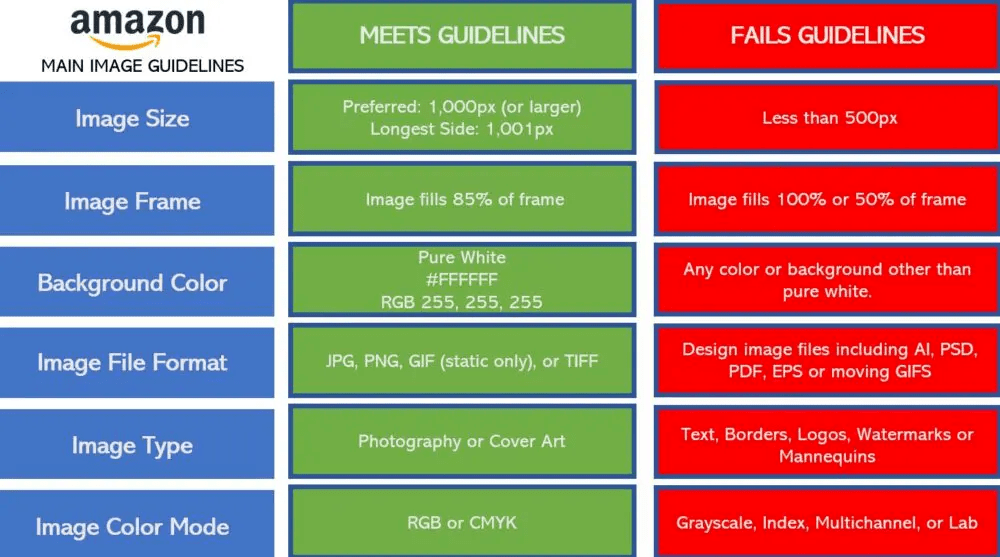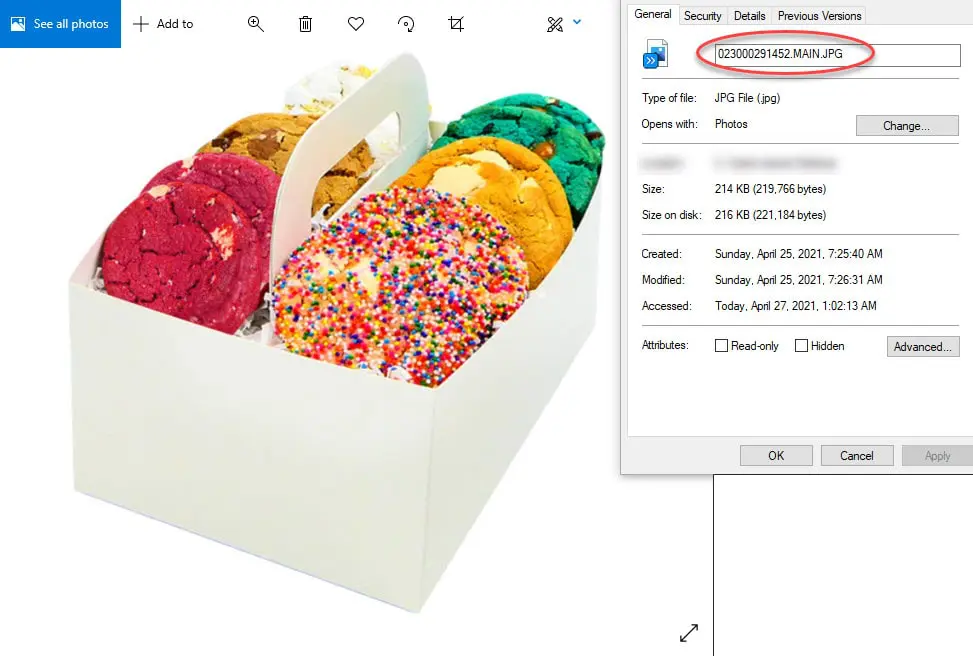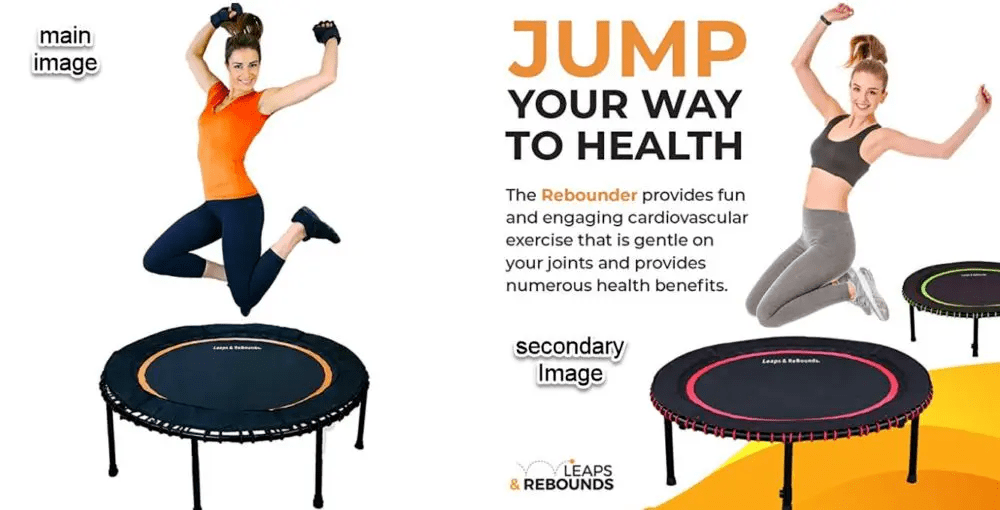
Few things have a bigger impact on ecommerce sales than product photography. High quality product photography is persuasive. It instills confidence in shoppers, making them more likely to complete a transaction.
As an ecommerce behemoth, Amazon understands that quality product imagery is essential to online sales. As such, the company has created a set of product imagery guidelines it expects all sellers to follow in order to attract and convert shoppers on the platform. Failing to meet the basic requirements can result in poor rankings in product search and low conversion rates on product pages.
In this guide we’ll cover Amazon’s product imagery requirements and share some of the best practices we recommend for our clients.
Main Product Photo Requirements
Amazon’s product photo guidelines cover every aspect of product photography, including image size, file formats, background colors, and even model positioning.
The chart below highlights Amazon’s best practices for main images at a glance.

Let’s dive into some of the specifics.
Image Size
Large, clear product images help potential buyers see all the details of a product.
Amazon recommends that for an optimal zoom experience images should be a minimum of 1,600px on the longer side.
Zoom functionality is not available for images less than 1,000px, and the minimum size for an image on the site is 500px. Images must not exceed 10,000px on the longer side.
At Emplicit our experience with our clients has led us to develop a standard recommendation of 2,000×2,000px for product images.
Image Frame
The frame of a product photo includes the entire canvas space of the image. Products should fit properly in the frame with no part of the product touching or cut off by the frame.
Amazon recommends that products take up around 85% of the image frame. Sellers whose products are too small (approximately 50% of the frame) or too large (close to 90%+) risk listing suppression.

Product Photo Background Color
Amazon requires sellers to use a pure white background color on product images. Pure white image backgrounds blend in with the background of product listing and detail pages, creating a visually unified browsing experience on the platform. Patterns and background colors other than pure white will result in listing suppression.
For the best results many sellers use lightboxes to photograph small items. Alternatively a cloth can work as a backdrop for most products.
File Formats
Amazon accepts product photos in several formats. JPG, PNG, and TIFF files are the most common. Sellers may also use a static GIF if the image does not include multiple frames. Avoid typical design formats such as AI, PSD, PDF, EPS, and animated GIFs.
Image File Naming

When saving product images, be sure to include the product identifier in the file name.
There are several variant codes you can use for all your product images, however the most important of these is the MAIN image variant code. The main image is the primary shot that will appear in the thumbnail version on search results pages and as the primary image on product pages.
Color Mode
Color modes change how many colors your product photos display, with RGB and CMYK modes offering the most color combinations. Either of these modes are acceptable to meet Amazon’s imagery requirements.
Supporting Image Guidelines
The above requirements apply specifically to main product imagery. Sellers can be more creative when it comes to supporting images by adding text, logos, and other features. Close-up and cropped photos are also allowed (and even encouraged) as supporting imagery.
Including a variety of different photos in product listings can help products stand out from the competition. Sellers are encouraged to use supporting images to highlight unique product features or show products in situ. Sellers can include up to six product photos and one video for each listing.
Pixel size guidelines are the same (1000px minimum) for all imagery, including both the
main and supporting images.

Summing up
Amazon has a vested interest in establishing a consistent customer experience on their platform. The company’s product image guidelines exist to help create that consistency.
To succeed on Amazon sellers must hew to these guidelines while showcasing brand
attributes and product differentiators.
Although taking, editing, and preparing photos for Amazon product listings can be time-consuming, it’s well worth the effort. Not only does Amazon require it, but image quality has a meaningful impact on sales.
At Emplicit we have a proven track record of helping eCommerce brands succeed and grow on Amazon. Get in touch with us to learn more or request a free quote.

